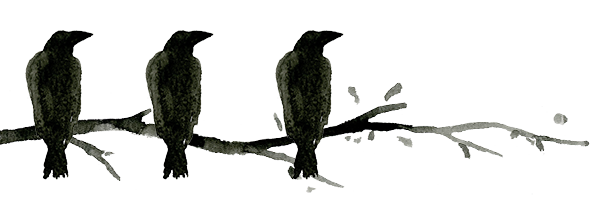Review of The Night Land by William Hope Hodgson
A.E. Jackson Review Score: 3 / 5 Ravens
How was this review scored?
Exploring classic uncanny fiction and horror is fun - I have to admit. Stories from the 1800's - while a little difficult to get through - are also filled with the rarified raw tropes used by the entire genre.
Take for instance William Hope Hodgson, whom I found on the Horror Babble YouTube Channel. His story 'The Derelict' is about a ship that goes off course in a storm, and comes into the proximity of another wrecked ship floating at sea. All the men think it is super old, so they go aboard to explore it. From ghost ship stories to derelict spaceships boarded by curious humans who meet a deadly end - the trope has been used a million times.
Or so it would seem to me on this end of the literary timeline. Hodgson imagined and crafted so many of these tropes as original material. Reading his work is exhilarating and like tapping into the source of science fiction and horror’s best ideas.
The Night Land is viewed by many as William Hope Hodgson’s masterpiece. When published in 1912, the novel was science fiction well ahead of its time. The story involves a 17th-century gentleman who loses his wife, the love of his life. He awakes from a depression induced sleep to find himself on Earth, millions of years in the future, after the sun has died and the planet is made into a hellish waste. What remains of humanity lives in a massive metal pyramid. While outside, great horrors walk the land.
Once acclimated to his strange surroundings, the man is informed that the human survivors inside the pyramid have received a distress signal sent from a lesser pyramid far away. The protagonist feels drawn mind, body, and soul to the signal, believing it to he sent by his long lost love. The journey is a bloody quest to rescue the maiden of the pyramid. The reader encounters countless terrifying monsters right beside the hero. H. P. Lovecraft called The Night Land “one of the most potent pieces of macabre imagination ever written” thanks to these depictions of horror.
Another classic whose terminology, cultural ideals, and dialogue have not aged well. This story is difficult to enter into, and stick with to the end. But for the intrepid explorer willing to brave The Night Land, immense feats of heroism and incredible moments of profound emotion await.
The Night Land can be read in physical, or digital form, from a multitude of publishers. I chose the LibriVox edition read by Mark Nelson. Having the ability to speed up the thick language, heavy description, and difficult conversation was a bonus. Still, as the imagery and plot took shape, it felt like I was right there beside the hero facing monstrosities never before imagined until Hodgson unearthed the creatures.
Often times I would listen to a section, and have to take a break to think through what just occurred. There is a lot of clarity lost in the way scenes were structured in 1912, and today. Modern fiction has adopted a deep point of view, fast paced action, and clipped dialogue and internal thought process which was not favored back then. To enjoy this tale one must settle into the narration, allow the storyteller to paint a scene, remember details between moments, and let the elements come together in a climax of realization and emotion that - frankly - modern fiction cannot match.
William Hope Hodgson (1877-1918) was a science-fiction pioneer. His classics The Night Land and The House on the Borderland were groundbreaking. He is also known as the writer of other sea horror tales including “The Voice in the Night”, “From the Tideless Sea”, The Ghost Pirates and The Boats of the “Glen Carrig”. Writers H. P. Lovecraft and Clark Ashton Smith were among those who read and admired Hodgson’s works. William Hope Hodgson published his first short story, “The Goddess of Death” in 1906, after facing many initial rejections. The Night Land was published in 1912.
Read more about William Hope Hodgson at https://williamhopehodgson.wordpress.com
You won’t find him on social media - but there are lots of fans out there eager to discuss his work.
(Special thanks to the research performed by R. Alain Everts, Sam Moskowitz, Jane Frank, and Sam Gafford. Their study into Hodgson’s biography provided most of the information retold here. I am gratefil for their hard work. Thank you.)



